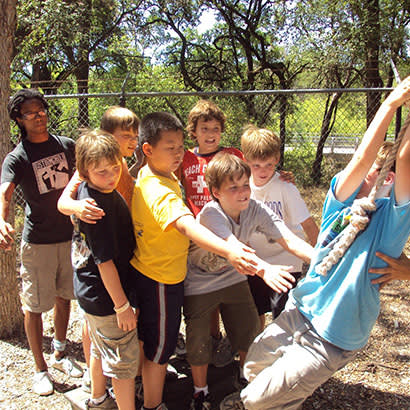
As park and recreation professionals, we must think about how to ensure the programs and services we offer are equitable. Another topic many of us contemplate is how to engage teenagers. We also must consider how to hire enough high-quality staff to lead programs, lifeguard at pools, maintain trails and work in guest services.
What if all three concerns have a common solution? What if there was a way to address social equity and create a pipeline for staffing by changing teen programs to attract more participation?
The solution is simple: Incentivize participation in low-income neighborhoods by creating a work training teen program, tie successful participation to school credit and pay teens to participate.
But What About the Budget?
Start by making all teen programs free. Childtrends.org published “Why Teens Are Not Involved in Out-of-School Time Programs: The Youth Perspective,” which outlines input gathered from adolescents in low-income families who were not enrolled in out-of-school time programs. The teens reported several reasons for their lack of participation, including financial problems. Some of the barriers to participation they identified can be mitigated by program planning.
If financial problems are a barrier, charging a fee will make teen programs inaccessible for many from low-income families. Free teen programming would make the activities more accessible to more teens. Incentivizing participation with a stipend or payment may even help families in your community make ends meet. In addition to enticing teens to participate in out-of-school time programs, paying teens can have an impact on social equity and long-term earning potential.
Teen programs designed to introduce responsibilities related to employment, such as a counselor-in-training or park ranger cadet programs, can be fun for teens while helping them develop job skills.
Higher Future Earning Potential
According to the Brookings Institute, studies reveal that adults who worked during their teenage years earn salaries 16 percent higher than those who didn’t work. The increased earning potential has lasting implications that can follow them nearly their entire career.
In 2000, 45 percent of Americans ages 16 to 19 worked in an average month. That number dropped to just above 25 percent by 2014. “This is the first generation not to have major work experience as part of their adolescent development,” according to Jeylan Mortimer, a sociologist who studied teenagers and work at the University of Minnesota. Another alarming trend related to youth employment is 38 percent of teens living in a household with a high annual income of up to $150,000 gain valuable work experience as adolescents, while only 21 percent of teens in low-income households are employed. And, black teens are half as likely to work during the summer as their white counterparts. Experts suspect systemic racism plays a role in the lower employment rates of teens of color.
If teenagers from low-income households are less likely to work, their chances of receiving the benefit of earning a higher salary as an adult decrease, as do their chances of escaping poverty.
Teen programming that focuses on developing job skills and instilling organizational values is the foundation for creating a recruitment pipeline. The key is to design programs that facilitate the transition of younger participants from passive participants, where parents register them and they have little attendance, to active participants, such as counselors-in-training who assist staff by instructing younger participants and earn an incentive. The program design must carry them all the way until they become eligible to be hired as temporary employees. This may include junior staff positions or internships.
The teens who participated in the childtrends.org roundtable said they often weren’t aware of the available programs, but when programs were linked to school credit, they were more aware of the opportunities. Partnering with schools to connect class credit with participation in out-of-school time teen programs can make a significant difference in the academic success of struggling students. A longitudinal study conducted by sociologists Jeylan Mortimer and Jeremy Staff found that “low-promise” students were more likely to obtain a college degree if they worked during their teens.
During a presentation at the Racial Equity in Outdoor and Environmental Leadership in January 2019, Brion Oaks, chief equity officer for the city of Austin, said: “I think it’s easy to talk about equity, diversity and inclusion…but how do you live by it? Do you set goals around it? Do you assess yourself to see how well you’re doing? Do you tie program outcomes to actually looking at how you impact equity at the end of the day? If not, then you’re not serious about it.” As park and recreation professionals, we can be serious about equity, diversity and inclusion by engaging teenagers.
Jessica Gilzow, CPRP is the Culture and Arts Program Manager for the Natural Resources Division at City of Austin Parks and Recreation Department. Michelle Rojas is the Museums and Cultural Programs Supervisor at the Emma S. Barrientos Mexican American Cultural Center at City of Austin Parks and Recreation Department.

